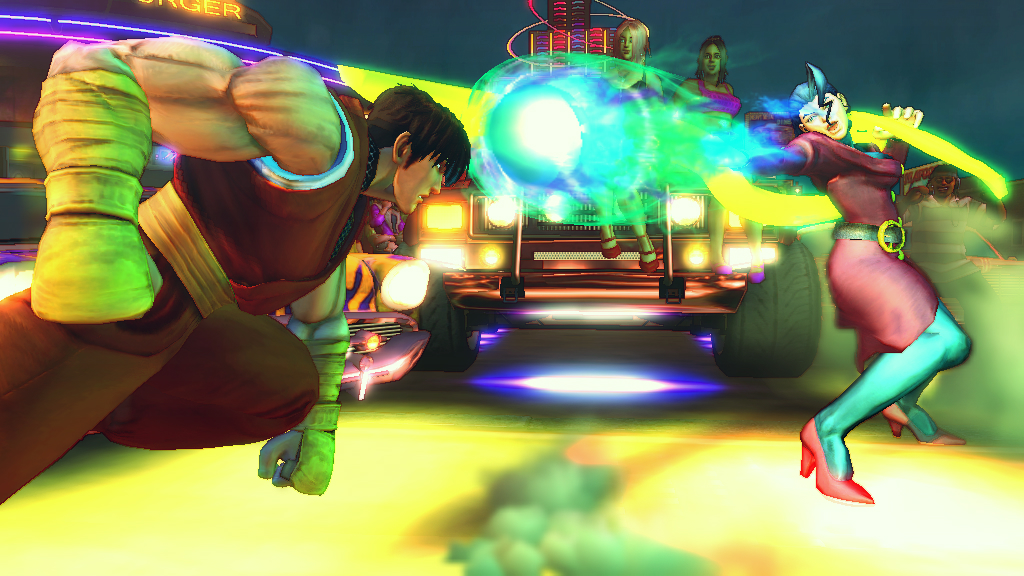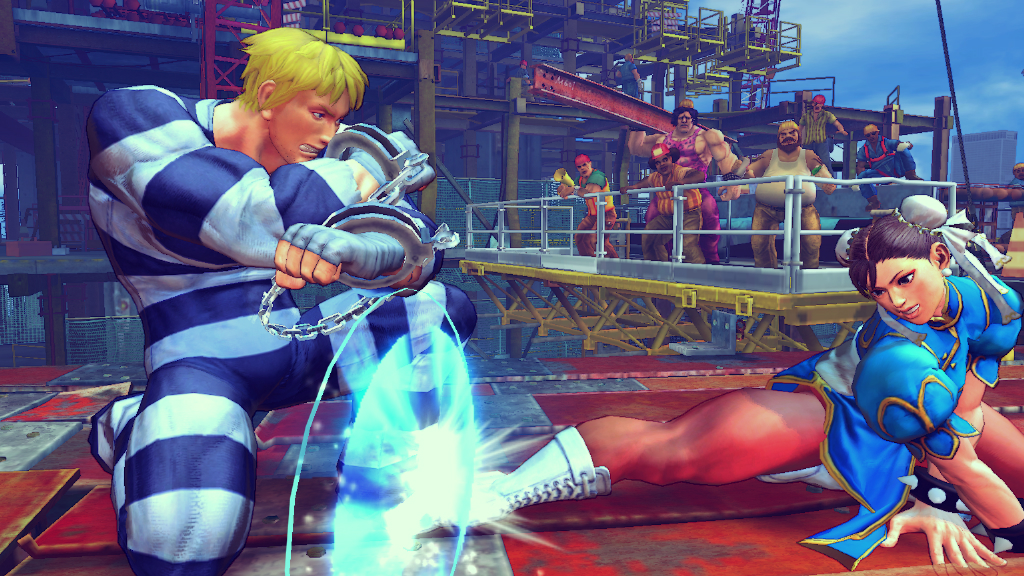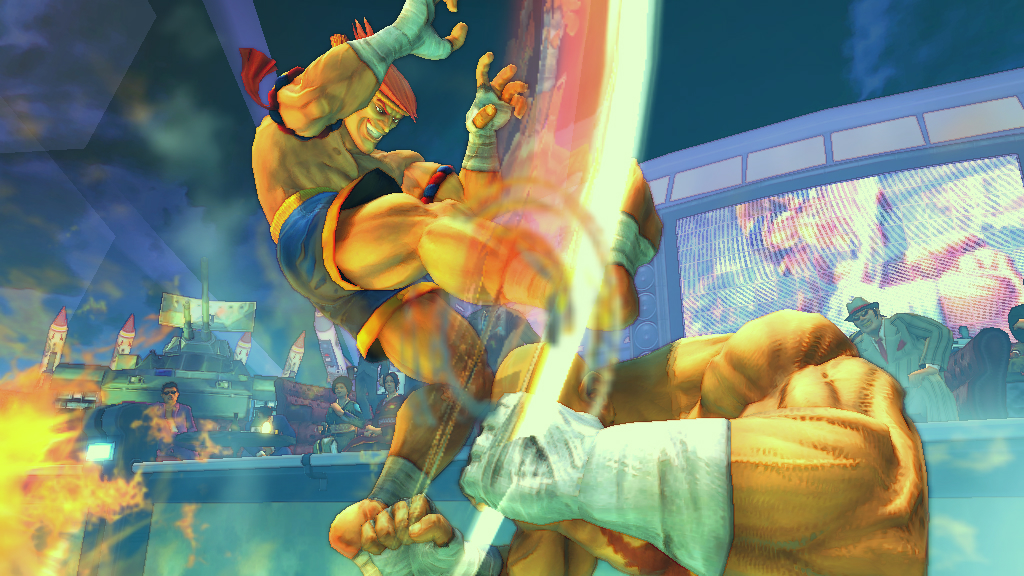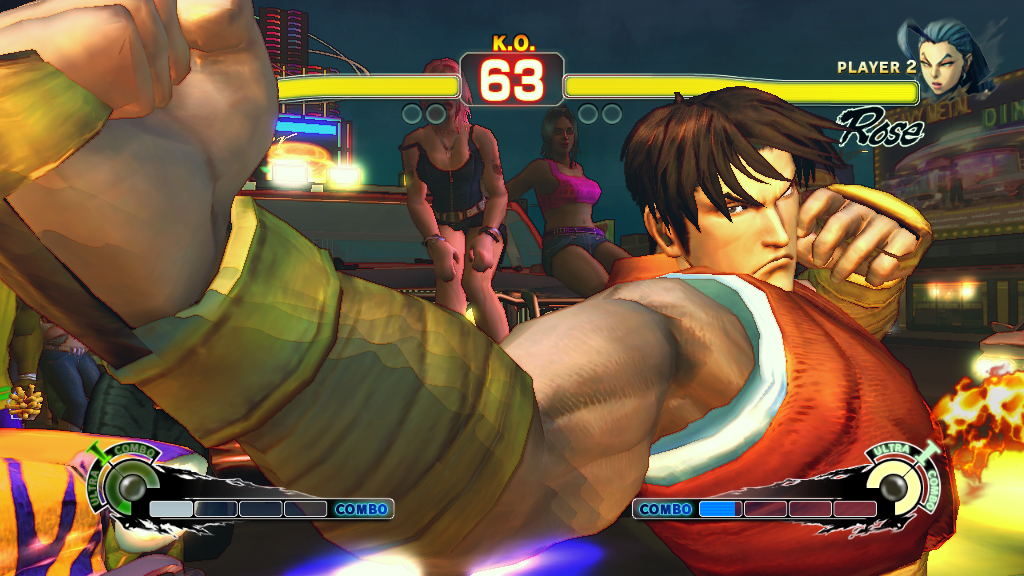When Capcom announced that they were releasing updated version of Street Fighter IV, a full year after the original game. The common reaction from the internet gaming community was a collective groan. At the time of the news, we didn’t know much about the game. Capcom was reverting to a time period when gamers were not online-enabled and downloadable content was non-existent terminology. When putting out a new version was a way to correct balancing issues and introduce new features in fighting games. Where adding “Super” to the title was a sign of them acknowledging their return to the old days.
But now that Super Street Fighter IV has been in my hands for about 2 weeks now. I have to say that putingt this out on a disc was well worth it. What Capcom has done with this release is something that is truly unheard of. They took the core of Street Fighter IV and crafted a completely new and fresh experience that could have been done with a very large DLC patch, added new characters, and re-worked every aspect of the game. If you thought Street Fighter IV was a great, then Super Street Fighter IV blow you away. DLC did work for Burnout Paradise and I have been an advocate of DLC since Burnout Paradise.
Super Street Fighter IV adds a wealth of new content including characters, stages, and modes. The 10 new characters including some Super Street Fighter II fighters, Dee Jay and T-Hawk, Adon, Cody, and Guy as well as some from the Alpha Series, and finally from Street Fighter 3 Dudley, Ibuki, and Makoto. Entering the Street Fighter Series is Juri and Hakan who bring the character count up to 35. Every character now has two ultra combos, which can be selected before the match starts, which brings you back to Street Fighter 3 fighting style. Besides the second ultra combo, the fighting system is totally unchanged. Focus attacks can be used to parry and break through an opponent’s defense. EX moves like in the first are more powerful versions of all characters’ standard special moves. They hit harder and send the opponent farther, usually setting up for more devastating combos. You can also perform an EX then cancel out of certain moves to keep opponents stunned or to escape in case you aren’t safe after the move.
While the fighting system does remain the same, the characters themselves have undergone a serious overhaul. All the characters have been re-balanced. Sagat is no longer sitting at the top, El Fuerte has been given a damage output buff, and Seth no longer destroys you the moment the words “Fight!” appear on the screen. The new characters have been integrated well and their moves and styles don’t conflict with the original roster. Every character feels fresh again and ripe to re-learn their intricacies and frame data, for those who want to dive deep (ie. the ones who wanna beat Justin Wong).
The feature set this time around is incredibly robust. The minigames from Street Fighter II the Car Crusher and Barrel Buster have returned and boy do they bring back memories . The only thing that’s missing is that hapless guy coming out and proclaiming, “Oh! My Car!” The two bonus stages are present in arcade mode, but can be turned off if you don’t want to go through them constantly. They are also added to the new challenge mode, where you can attempt them for high scores. Trials are back, a special training mode, that both teaches you advanced techniques for all the characters and challenges you to pull them off. Every character has 25 trials and as you progress through them you unlock titles and icons, which can be used for your personalized fighting card that players see before you fight them online.
The online mode, one of the biggest gripes from Street Fighter IV, has been completely overhauled. Ranked battles are where you go to gain your BP and PP, points that determine your rank. Instead of player matches, though, an Endless Battle feature has been implemented. Here, players enter a lobby and each takes turns fighting the winner. Everyone watches the match and can chat. Winner stays and the next person in line moves up to fight. I loved this mode. You can either drop into a random lobby or create your own where friends can join up, throw some hadoukens, and chat away as you have fun competing. There’s also a new team battle mode which splits players up into two teams of four to duke it out for supremacy. All of these occur in a nearly lag-free environment, thanks to Capcom’s GGPO network code. In all of the matches I participated in, I didn’t experience any lag. Finding games was also a painless affair, something that I was constantly fighting with in Street Fighter IV. It’s been cleaned up, streamlined, and is very easy to navigate with minimal hassle.
But one of the coolest and most welcome additions is the Replay Theatre. Your matches can now be recorded and uploaded to the Replay Theatre for others to download and watch. Clips are split up by their selected characters (e.g. Turbo & III is a channel for Turbo and Street Fighter 3 characters), and you can enter the selected channel to see clips for the character you’re looking for. Players can upload combo videos for others to study or record a particular beatdown for bragging rights. Or perhaps you and a friend had an amazing match that can’t be expressed in words. Replay Theatre makes sharing all of these possible. It’s a great way to capture awesome moments or make tutorials for others, and a good way to foster the community.
The graphics have also been given a new coat of paint. Everything looks cleaner and the new stages that have been added include a bit more animation in the backgrounds. The Metro City level, for example, has numerous characters in the background carrying grinders, and the metal beam you are on rotates around to show off the level. The fighters’ animations and facial expressions look more detailed and the camera angles have been spruced up for the ultra combos. The menus have also been cleaned up and have more animation in them. Things like the Fight Request feature are present before you start arcade mode instead of having to go into another menu to turn it on or off. It’s just such a high degree of polish of everything that makes SSFIV works more smoothly and looks better than before.
Overall for $39.99 I must say that this game is a must buy for either system. Capcom has done much more than add on a few new characters and features and push the game out the door. They’ve taken the original title, reconstructed it, and produced a game that surpasses the original Street Fighter IV in every way possible.



